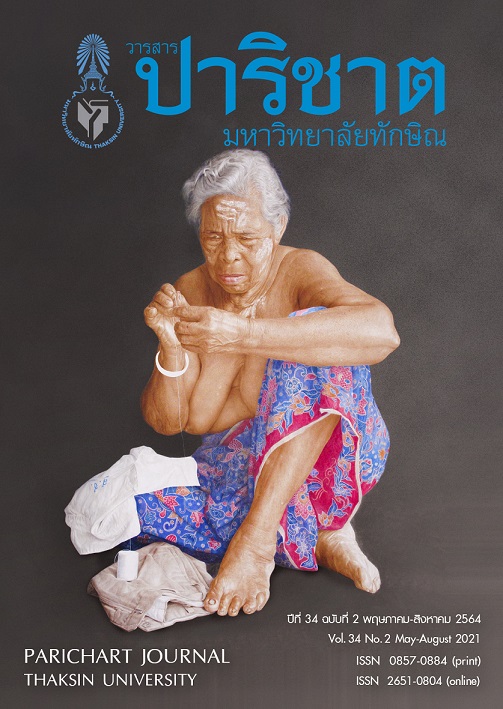A Comparative Study of the Historical Development Process of Thai Molam and Chinese Molun Performing Arts
Main Article Content
Abstract
This article is part of the thesis study entitled, “A Comparative Study of Thai Morlam
and Chinese Morlan”. The study employed the qualitative research methodology with the aim to compare the historical development of the performances in the areas selected purposively, namely in Mahasarakham, Roi-et and Khonkaen provinces in Thailand and in Jingxi, Debao and Baise cities in Guangxi region. The data were collected through interviews with experts, artists, scholars and audiences. The results revealed that both types of performances originated as folk performances and reflected the singing styles of the local people, and that no historical documents clearly recorded their origins. Thailand’s Morlam was passed on from Laos to the people in the upper class and was favored by Thai kings from the beginning, a key factor contributing to its widespread popularity in Thailand. China’s Morlan originated in a village in Jingxi city, Guangxi region, and was adopted by only the local people. It was not favored by the wealthy leaders. Such discriminating factor limited the future development of this form of performance in China.
Article Details
References
Chonpairot, J. (2010). Music of Northheast Thailand: Motemization and Creation of Traditional Music. Mahasakham University. (In Thai)
Xiaoqin, L. (2014). Viewing the Relationship between Zhuang and Thai Ethnic Groups from The Folk Singing Tradition Taking the comparison between the Chinese “Molun” and the Laos Thai “Molam”. China.
Shengming, Q. (2003). A Comparative Study of Zhuang and Thai National Traditional Culture (Volume 5). China
Terry, E. M. (1985). Traditional music of the Lao: Kaen playing and Mawlum singing in Northeast Thailand. U.S.A.
Chonpairot, J. (2004). “Arts of Creating a Lam Melody,” A Paper Presented at the 5th Academic Conference at the College of Music, Mahidol University, Salaya, Nakhon Prathom, 5-6 February. (In Thai)
Karin K. (2019). Morlam Atsajun. Department of Cultural Promotion. Thailand. (In Thai)
Ximu, F. (2006). A Comparative Study of Traditional Music Culture between Zhuang and Thai. Nanning Guangxi, China.


